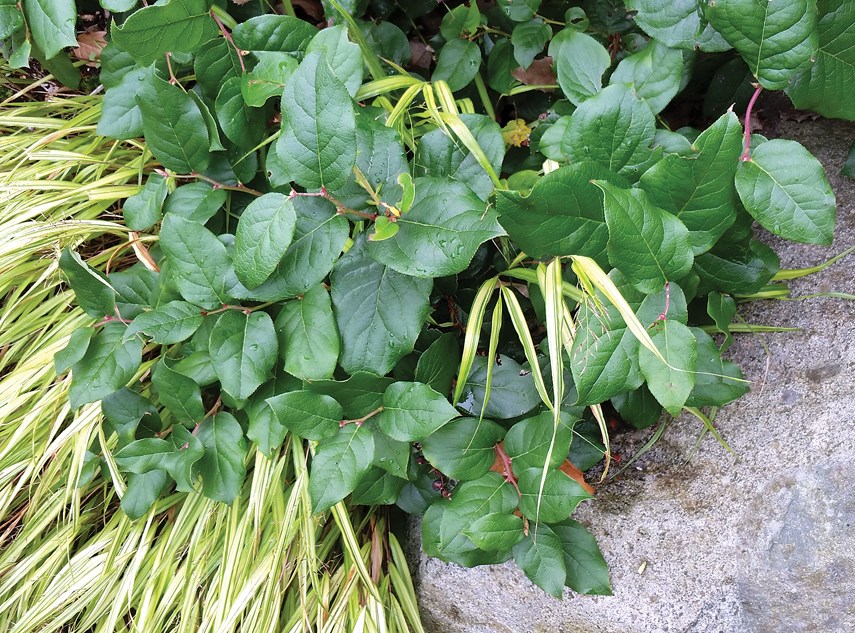Salal, also known as Gaultheria shallon, really stands out and shines this time of year.
When most of the leaves on our deciduous plants have fallen, salal marks its place in the forest and some native gardens.
A beautiful evergreen with egg-shaped leathery leaves, pinkish flowers and a good berry crop in years when rainfall is ample, it will grow from between half a foot to five metres.
I have never see any five-metre tall plants, but I would guess it would reach this height only in some very old forested areas.
In residential plantings it is normally about less than a metre tall. The new growth is particularly beautiful in early summer with its bright green and shiny leaves.
Salal is commonly found as an understory plant in our West Coast forests. I find it a great solution for bare areas under large evergreens. I routinely help people convert lawns to planted areas, and often the trees will have become very large and no longer allow lawn to survive in the shady root-dense areas under the trees. Salal is a good option as it does best in semi shade and is a natural companion for large evergreens.
Flowering in early spring, blossoms are pink and white urn-shaped blooms, followed by large dark blue berries. The berries have had many uses through history, such as being dried into cakes by the Coast Salish people and dipped in an oolichan grease at Kwakwaka’wakw feasts. The Haida people have used salal berries to thicken salmon eggs.
More recently, the berries are being used in preserves, soaked in honey and drizzled over cake, as well as being used as an ingredient in gin. These plants offer food and shelter for wildlife, nectar for insects, especially bees, and can act as a windbreak and are drought tolerant. The foliage is also great for floral arrangements.
As with many native plants, they can take about three years to establish, and are most reliably grown from well rooted potted plants. I find the small plants often establish best due to often limited soil depth at planting time. If you want to establish new plants under large trees you will need to add a bit of soil or amender over the roots but be careful not to overdue the soil depth as that can harm the tree. About seven centimetres deep is often ideal.
Once established, it develops a very strong root system and it is best to use a root barrier of at least 12 inches if you want to keep it from spreading to more fragile planted areas.
If you have an area with salal spreading to areas where it is unwanted, you can follow the runners back to some roots, remove it and replant somewhere else.
Heather Schamehorn is a certified residential landscape designer, consultant, educator, sustainability advocate and acupressure therapist. Contact via www.perennialpleasures.ca



